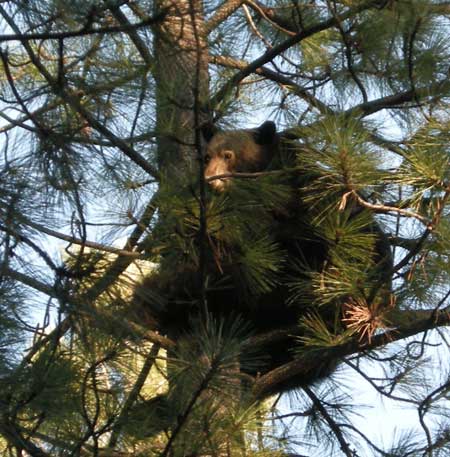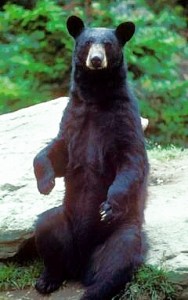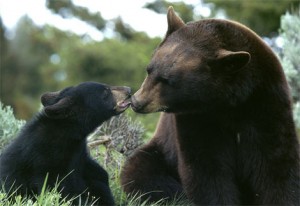
Picture taken by Jeff Toff’s cousin in Lake Tahoe
A friend of mine has a cousin who lives in Lake Tahoe. This winter a black bear decided to use the cousin’s space under his house to live in. Making it nice and cozy for the bear, the bear dislodged the heating ducts so he could stay warm during the winter. Being warm, the bear did not want to come out, but he got spooked when humans came around and he run up a tree as you can see in the picture.
A little information on the black bear which is also known as the American black bear, they’re the smallest and most common species of bear. They’re omnivores, eating whatever is in season and with a wide variety of food, making them a survivor over other bear species that have become extinct. However, it’s said that 85% of their diet is vegetarian. It’s estimated that there are twice as many black bears as all other species of bears.
They range in size from 125 to 550 pounds, can run at speeds from 25 to 30 mph. However, compared to brown bear attacks, violent encounters with black bears rarely lead to serious injury. But the majority of black bear attacks tend to be motivated more by hunger rather than territoriality, and thus victims have a higher probability of surviving by fighting back rather than submitting
By the way, the bear’s OK, he came down and went on his way looking for another warm place to camp out. Hopefully with forced air heat.
Source for information on black bears: Wikipedia
Source for story Jeff Toff
For all your real estate needs Call
John J. O’Dell
Real Estate Broker
O’Dell Realty
(530) 263-1091
Email jodell@nevadacounty.com
DRE# 006689941

